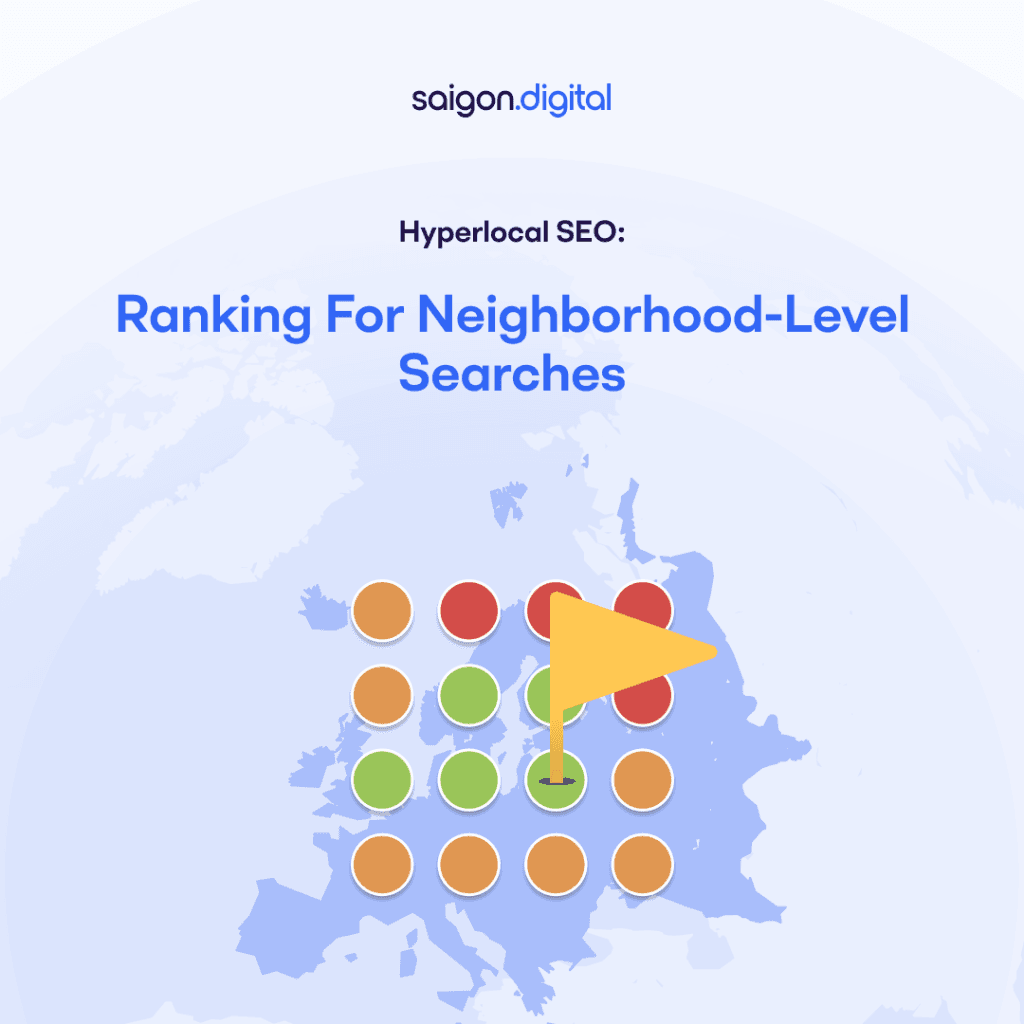
What is Hyperlocal SEO?
Hyperlocal SEO is the practice of optimising your online presence to target searches that are tied to a very small, precise geographic area. Unlike broader local SEO , which might cover an entire city, hyperlocal SEO zooms in on the neighbourhood level. For example:- A coffee shop in Notting Hill doesn’t just want to rank for “coffee shops in London.” That’s too broad. Instead, it wants to appear when someone searches “best latte in Notting Hill” or “café near Portobello Road.”
- A locksmith in Manchester’s Northern Quarter benefits more from ranking for “24/7 locksmith Northern Quarter” than from competing for the general keyword “locksmith Manchester.”
Why Hyperlocal SEO Matters
Search behaviour has become increasingly location-driven. With rising SEO trends such as mobile usage, people search “near me” on the go, often expecting results within walking distance. Google has adapted to this by prioritising hyperlocal results in its map listings and local packs. Here’s why it matters:- Higher intent searches: A person searching “dentist near me” is likely ready to book an appointment today, not just browsing.
- Less competition: Competing citywide can be overwhelming, but narrowing focus to a district or neighbourhood makes visibility more achievable.
- Improved foot traffic: If someone finds your listing while standing nearby, they are far more likely to visit.

Key Elements of Hyperlocal SEO
Optimising for neighbourhood-level searches requires a combination of technical SEO, local signals, and community-focused strategies. Below are the main areas to consider:1. Google Business Profile (GBP) Optimisation
Your Google Business Profile is often the first thing potential customers see. For hyperlocal impact:- Ensure your business name, address, and phone number (NAP) are 100% consistent.
- Add precise location markers, even down to street or building names if relevant.
- Use neighbourhood-specific keywords in your description, services, and posts.
- Upload photos tagged with geolocation data.
2. On-Page Optimisation for Hyperlocal Keywords
Your website content should mirror the way people search locally. Instead of generic location pages, create neighbourhood-specific landing pages. Practical ideas:- Blog posts about local events or community activities (“Top 5 places to enjoy spring in Clapham”).
- Service pages tailored to micro-locations (“Emergency plumbing services in Hackney Central”).
- Use landmarks, streets, and postcode references naturally in your content.
3. Local Citations and Directories
Hyperlocal SEO is strengthened by your presence on local directories and citation sites. Beyond national listings like Yelp, consider neighbourhood-specific directories, local business associations, and community websites. Every mention of your business details increases trust signals for Google and improves discoverability within your area.4. Reviews and Local Engagement
Reviews are not just about credibility, they also influence local rankings. Encourage satisfied customers to leave reviews mentioning the neighbourhood name. Example: Instead of a generic review saying “Great barbershop,” a review that reads “Best haircut I’ve had in Shoreditch” directly reinforces hyperlocal authority. Additionally, engaging with local community groups (online forums, Facebook groups, Nextdoor) helps build brand recognition within your immediate market.
5. Mobile-Friendly, Fast Websites
Hyperlocal searches often happen on mobile devices. A customer standing on a high street looking for “Thai restaurant nearby” won’t wait for a slow-loading site. Ensuring your website is fast, mobile-friendly, and easy to navigate directly impacts conversions.Hyperlocal SEO in Action
Let’s consider a real-world example:- Scenario: A family-run Italian restaurant in Bristol’s Clifton Village.
- Traditional SEO approach: Targeting “Italian restaurant Bristol.” Competition is high, and the restaurant struggles to rank.
- Hyperlocal SEO approach: Optimising for “Italian restaurant Clifton Village” and “best pizza near Clifton Suspension Bridge.” By refining its GBP, earning reviews that mention Clifton Village, and writing content about the local community, the restaurant begins to dominate neighbourhood-level searches.
Actionable Steps to Get Started
If you want to harness the power of hyperlocal SEO, here are three steps you can take today:1. Audit Your Current Local Visibility
The first step is understanding where you currently stand. Open Google on your phone or desktop and search for your service alongside “near me” or with your neighbourhood’s name. For example, if you run a bakery in Chelsea, search for “bakery near me” or “Chelsea bakery.” Take note of whether your business appears in the Google Map Pack, local results, or only deeper within the listings. This quick audit reveals your visibility gaps and helps you identify what competitors are doing differently. It also gives you a baseline from which to measure your progress.2. Update Your Google Business Profile
Your Google Business Profile (GBP) acts as your digital storefront. Keeping it updated is vital for hyperlocal SEO success. Ensure your business name, address, and phone number are accurate and consistent with what appears on your website. Include local keywords in your description, select the right business categories, and upload quality photos of your premises, products, or team. Even small details like adding your opening hours or responding promptly to reviews send positive signals to Google and improve your chances of appearing in local searches.





